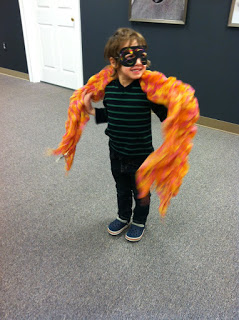Parenting Tip: Create dance moves for every room in the house! Why? Expressive movement is pretend play that’s functioning in a new way – giving your child motions that they might not normally use. For instance, the movements involved in pretending to build a house create an opportunity to use familiar movements in a new way. Each tool movements combines a hand motion with a movement concept (tempo, direction and pathway, levels, weight, energy). Expressive movement strengthens gross motor and social skills, and nurtures children's creativity and imagination. The freedom of creative movement also helps children to express their emotions and relieve some tension. Movement also helps children to internalize musical concepts, such as steady beat, melodic contour, tempo, dynamics, and meter. How? play 'Home on the Hive!' Next, look all around to find the objects in the House Hunt! Turn on 'Kitchen Commotion,' from your home CD. Find instruments and a variety of sound-makers from your kitchen cabinets to create a family playalong! Cue up 'Great Big House,' and create a whole-house dance party! How should we move, in the livingroom? What about in the kitchen? How should we dance in the hallway? Or the den? Have fun creating movements, together – AND have fun remembering which one comes next! Want to Learn More? On our blog: Read Why We Rock, Bounce, Jump & Dance! Kindermusik 7-Year Continuum: As babies, Kindermusik kids are moved around to music by their adults. Toddlers start to move their own bodies, in response to sound (‘I’m dancing like a lion!’). As a preschooler, your child is now creating her own moves to express what she is hearing, or what she is imagining (‘How should we dance in the kitchen? What about the livingroom? Or back yard?’). Big kids in Young Child classes continue to use expressive movement to build their understanding of musical concepts, while using what they’ve learned through movement to then PLAY MUSIC more expressively.



Leave a Reply